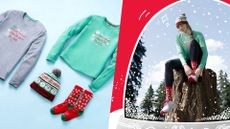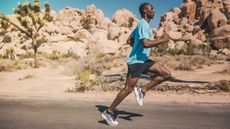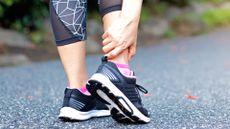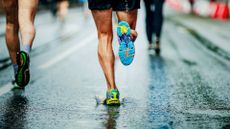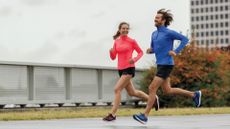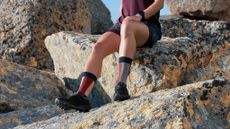The best trail running shoes can help you scale and descend even the most technical hills and mountains with ease. Trail shoes can help you go fast when traversing uneven terrain and protect your feet from rocks, branches, mud or anything else you come across as you devour the miles on a forest path or mountain trail.
Trail running shoes from the best brands, including Inov-8, Salomon, Adidas Terrex, Nike Trail, New Balance and Saucony, are always sought after, not least because Gen Z loves (external link) the Great Outdoors more than any preceding generation. It's also trendy to wear functional clothing in a fashionable way, which generates even more interest towards trail running shoes and apparel in general.
Of course, we'd still recommend the best running shoes for those who prefer to run on smooth, hard surfaces. Looking for shoes that will keep your feet dry? Check out our best waterproof running shoe guide for more info. Check out T3's best workout shoe guide for even more shoe reviews.
Best trail running shoes to buy right now
Why you can trust T3 Our expert reviewers spend hours testing and comparing products and services so you can choose the best for you. Find out more about how we test.
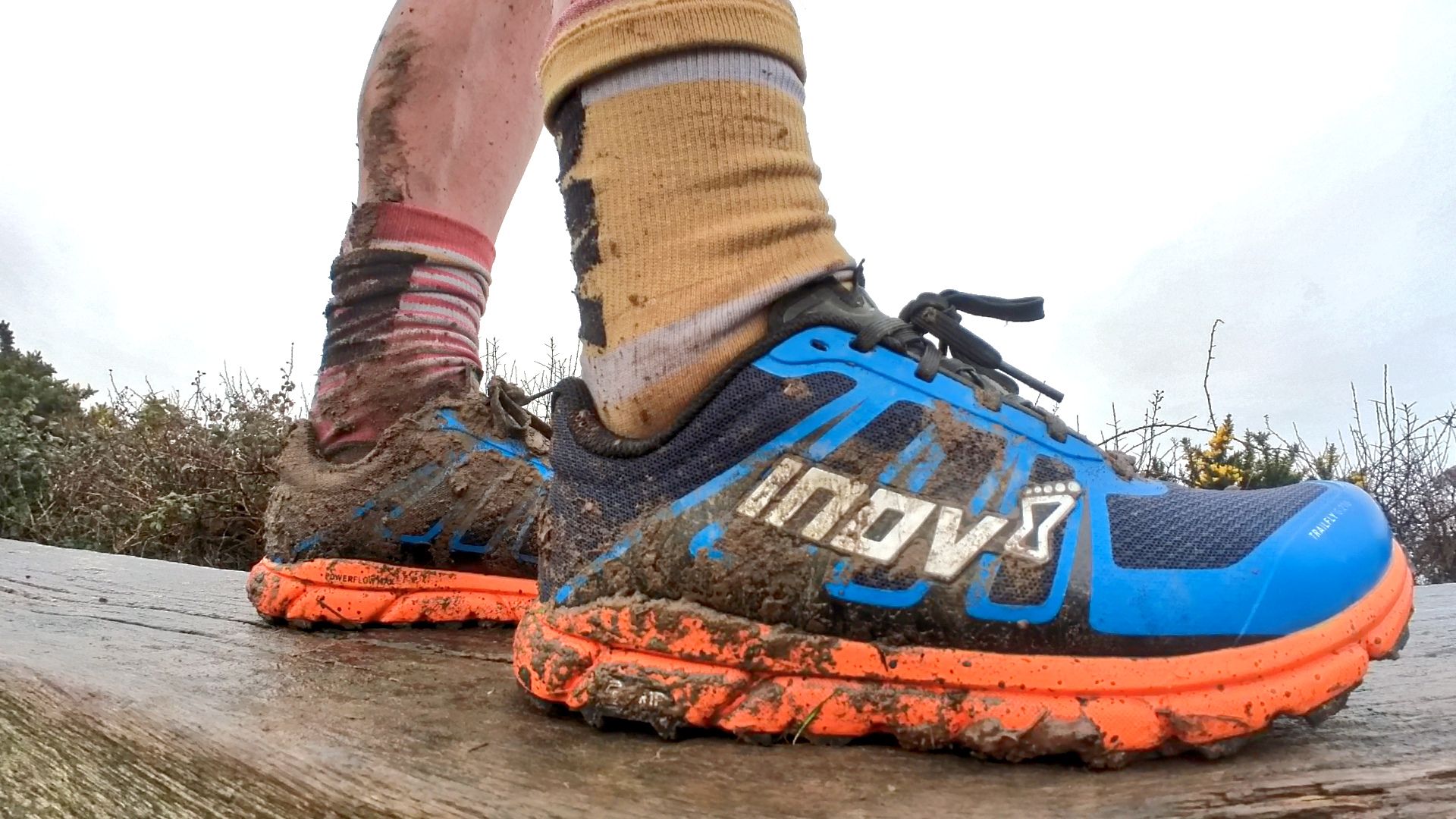
It’s fair to say that the first generation inov-8 Trailfly G270 was a huge hit. With its combination of durable uppers, fast and snappy zero-drop, graphene-infused midsole and super-sticky grip, it scooped best trail shoe awards all over the place. But when a shoe finds a winning formula, we’re always wary of the follow-up. Brands love to tinker, and not always in a good way. Has the brand-new Trailfly G270 V2 made smart improvements?
Thankfully, yes, it did. Everything we loved about first-gen remains, including the excellent grip and durability, the light, speedy, agile ride, the balanced cushioning and stability. In fact, it feels like you’re running in the identical shoe but with a better upper to edge up the comfort. This is evolution, not revolution; if you love the first-gen, you will love these.
Read our full Inov-8 Trailfly G270 V2 review
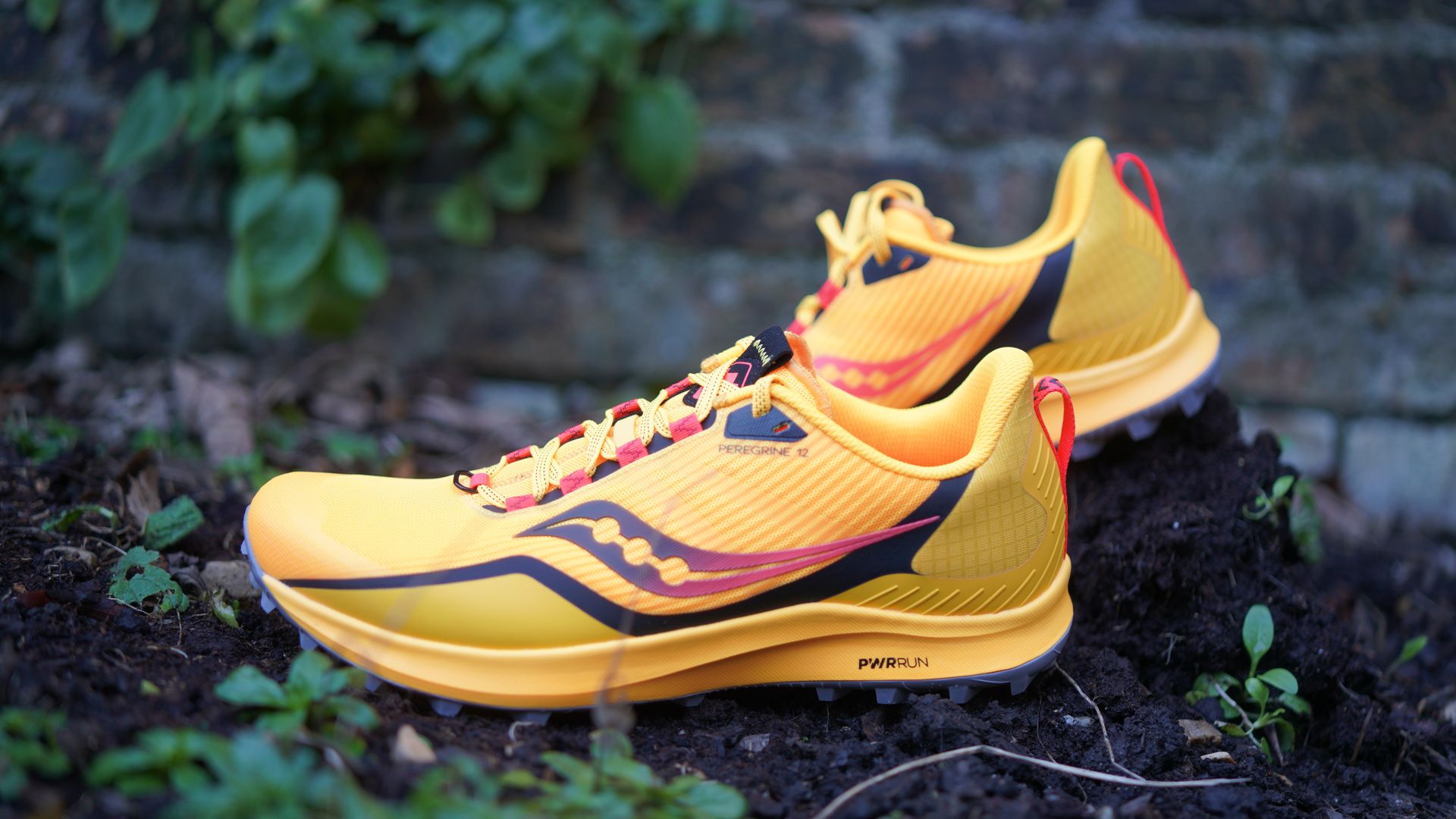

The Saucony Peregrine 12 is a durable, versatile trail shoe which performs well in all weather and on all terrain. They may not be the cheapest trail shoes on the market, but they will protect your feet for longer and cope better in slippery conditions than value footwear.
If you want to invest your cash in a pair of reliable treads that will see you through hundreds of gnarly miles, this is the trail shoe for you. They look great, feel good and respond quickly, and you know they will be a great all-rounder, particularly for long-distance runners tackling a variety of surfaces.
The new lightweight design and sticky traction mean they are great for speed, too and won't weigh your feet down in marathon and ultra races even when wet. With additional drainage in the sole, this pair should keep you light and dry on your feet for mile after mile.
Read our full Saucony Peregrine 12 review
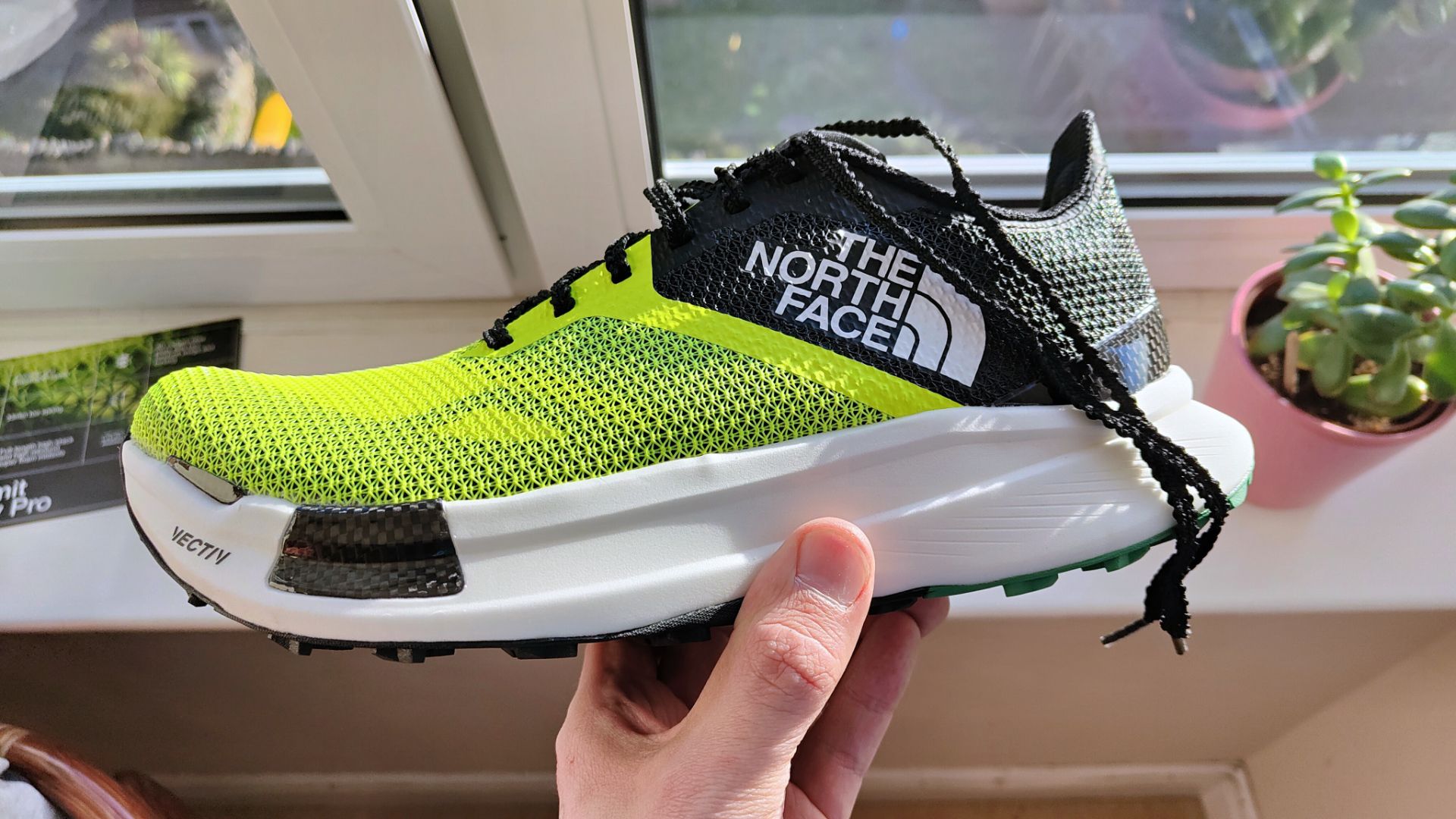
The Summit Vectiv 2.0 Pro updated some of the features that made the original The North Face Flight Series Vectiv so innovative; it also inherited some of its flaws. Thankfully, the pros outweigh the cons by a mile, including the well-balanced rocker, soft, responsive foam, plenty of energy coming from the carbon plate, and a roomy toe box, making it much easier to recommend the shoes now.
The Summit Vectiv 2.0 Pro is a super shoe through and through, and the price reflects this, which might not be justifiable to (or needed by) many trail runners. Those who can, though, will be rewarded with what we think is the best road-to-trail running shoe these days, and that's no small feat in this saturated market.
Read our full The North Face Summit Vectiv 2.0 Pro review
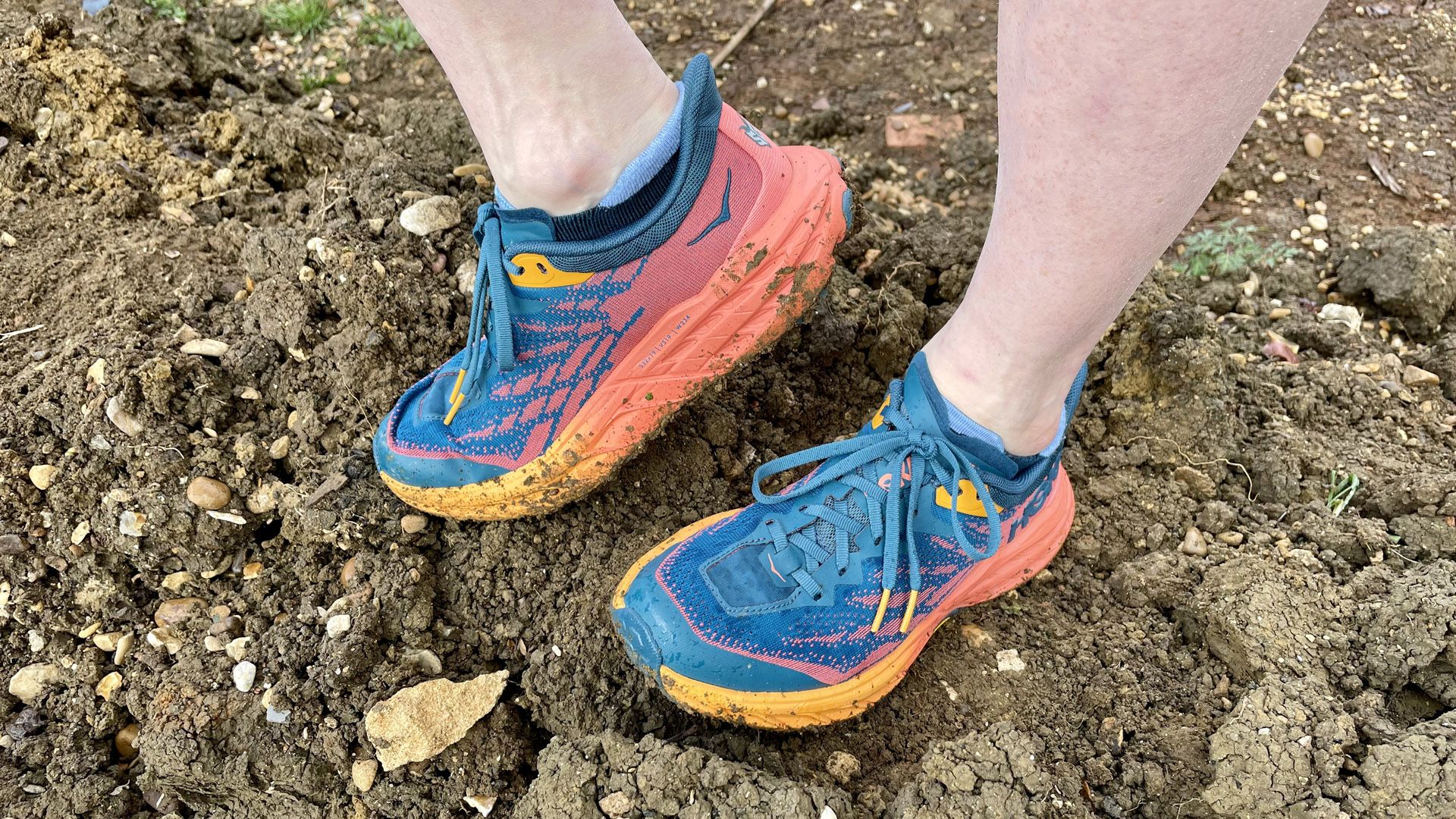

The Hoka Speedgoat 5 is quite frankly delicious to look at and wear. It combines unrivalled bounce, extreme comfort and excellent grip into one helluva' trail running shoe that's hard to beat. Sure, it's a chunky unit, like most of Hoka's shoes, but the extra foam underfoot protects the foot from impact/rocks and cushions landings beautifully.
One small thing to note is that the standard version of the Speedgoat 5 has a relatively narrow toe box; people with wide feet should opt for the wide (EE) model, especially if they happen to run longer distances.
Read our full Hoka Speedgoat 5 review

The Asics GEL-Trabuco 10 is a very exciting prospect if you're looking for a trail shoe designed for overpronation – on our test runs, the grip was great on an 11-mile trail run over all sorts of terrain, including grass, rocks, road, wooden stiles, stoney tracks and dusty dry-mud fields.
However, if you are already into trail running and not having any problems in that direction, they may be a tad on the stiff, heavier side for you. That said, it's hard not to love the on-trend look of the Gel-Trabuco 10 with the turquoise knitted uppers combined with a hot pink sole with design accents and laces to match. Not to mention, it's comfy right away!
Read our full ASICS Gel-Trabuco 10 review

Salomon recently underwent a slight rebranding to emphasise not only the outdoor heritage of the brand but also its strong presence in the athleisure scene. The revamped Speedcross 6 is the perfect representation of this mix of purposes; the shoes are equally as good for trail running as they are for roaming the city streets in your gorpcore outfit.
Here, we'll focus on the trail running prowess of the Speedcross 6, of course. These trail shoes feel most at home on mixed terrain, especially on muddy paths where grip is paramount to avoid injury. The 5 mm lugs bite into soft ground and help propel yourself forward; here is a short IG reel of how it looks in action.
Grippy and capable as it might be, the Salomon Speedcross 6 is by no means intolerably to wear, like some trail shoes in the same category. In fact, it's one of the most comfortable trail running shoes we tried in 2022, thanks to the Quicklace lacing system and the soft upper. Sadly, the Speedcross 6 is not waterproof and hard to clean, so once you get them dirty, they'll stay filthy forever.


The New Balance Fresh Foam Hierro series always tried to be different from other trail running shoes. Sure, the Adidas Terrex series is not an eyesore, but Hierros look great and can genuinely be worn whenever: on the trail, in the pub or when you're out on a walk with the fam.
This doesn't mean the Hierro v6 won't perform well on the trail. On the contrary, the plush Fresh Foam midsole will make every step comfortable, and you will be happy to clock in the miles in the Hierro v6. The shoes are not as soft as the road running shoes that use the same midsole due to the extra protection underfoot, but they are far from firm.
The Vibram MegaGrip will help you descend safely and provide some grip when trying to attack hills too. The Hierro v6 is not quite as grippy as the Inov-8 Trailfly Ultra G 300 Max, but you don't need a crazy aggressive grip for every surface.
The synthetic/mesh upper uses 'zonal' TPU threads for added support and protection in high wear areas, plus laser perforations for ventilation. The upper is well-padded, maybe a bit warm due to all the extra fabric surrounding the foot, but this works well with the ultra-cushioned lower half of the Hierro v6. We certainly wouldn't put a thin mesh upper on such a plush midsole.
Shop our New Balance discount codes to save on your new footwear.


The Salomon brand needs no introduction in trail running circles. Nevertheless, the Ultra Glide is something new from Salomon: it's the brand's first attempt to offer a cushioned trail running shoe such as New Balance's Hierro v6. And after testing it for a few weeks, I can confirm it's a decent attempt.
The Salomon Ultra Glide's SensiFit upper provides a snug fit, enveloping the foot with its padded goodness. Not in a suffocating way, but nicely. Salomon calls the shoe 'lightweight', but I wouldn't necessarily call shoes that weigh over 300 grams super light. Still, considering the amount of padding involved, the Ultra Glide isn't a terribly heavy shoe for sure.
The Energy Surge midsole – combined with a new rocker shape – delivers a responsive ride. It's not quite as pronounced as Hoka's signature early-stage Meta-Rocker, but the Salomon rocker has potential.
In summary, if you're looking for Salomon trail running shoes but want to make sure you're in for a comfortable ride, the Ultra glide is your best option. You get the best of both worlds: Salonom performance and well-padded comfort.


The North Face Flight Series Vectiv shoes seem to illicit slightly Marmite responses. While there are some glowing reviews from hardcore long-distance trail runners – and if you fall into that camp, they could be well worth a look – amongst less experienced runners; the responses are more hit-and-miss.
The Vectiv seems to work best on flatter, hard-packed routes, and if you're new to the rocker midsole style, you might also want to start with shorter distances, to begin with, to avoid sore feet. However, once you get comfortable with the Vectiv, the world indeed becomes your oyster: you will be able to fly across vast swathes of countryside in a blink of an eye.
This ultra-running shoe is certainly not for everyone, but if you're one of those trail runners who enjoy a bit of a challenge and constantly strive to beat your previous PB, the Vectiv will enable you to do that as long as you do it on a relatively flat surface.
If you prefer your trail running shoes to be waterproof, have a look at The North Face Vectiv Futurelight Infinite shoes. These shoes feature an "ultra-thin nanomembrane that creates airflow while keeping water out", as The North Face explains. Other than that, and from a performance point of view, the Flight Vectiv and the Vectiv Futurelight Infinite shoes are almost identical, apart from the weight, of course: the latter is 50 grams heavier thanks to the added waterproof layer on the upper.
Read our full The North Face Flight Series Vectiv review


Initially, we were impressed with the comfort of the Arc'teryx Norvan LD 3, but the longer we wore them, the more we realised they were best suited to beginners. They have a reasonably high price tag and will appeal to those looking for a trail shoe with additional cushioning and support. If you are a fan of Asics Cumulus or Brooks Ghost road shoes, these are good crossover trail shoes.
They are also suitable for runners whose feet meet the ground heel first and require a 6mm drop. But longer distance, experienced trail runners may prefer something less restrictive, which allows them to feel the earth more intuitively.
Read our full Arc'teryx Norvan LD 3 review
FAQ
What are the best shoes for trail running
Technically, you can use road running shoes for trail runs, but we strongly recommend getting appropriate footwear for muddy trails. Trail shoes are especially well suited for providing grip on slippery surfaces, one of the biggest obstacles you need to overcome when running on uneven terrain.
Among more established contenders, our pick for the best trail running shoe currently is the Catamount, the latest trail shoe from Brooks to utilise the light and bouncy nitrogen-infused DNA Flash midsole technology we so loved in the Brooks Hyperion Tempo. It is also comfortable and very grippy too.
If you are looking for even more energy return, try the Inov-8 Trailfly Ultra G 300 Max for size. These aggressive-looking shoes use a Graphene-infused rubber outsole that provides more energy return than standard EVA midsoles. The upper is pretty comfortable and breathable, too, ideal for warm-weather runs.
If you're after pure speed, look no further than the Adidas Terrex Speed Ultra. These sleek-looking trail running shoes use Adidas' Boost midsole technology, and although the Terrex Speed Ultra might not provide an awful lot of grip on very soft surfaces, you will be able to unleash your full potential on semi-hard to hard trail paths wearing these shoes.
Can you run on road with trail shoes?
Sure you can! Most trail running shoes will work just fine on the road, and it's recommended to use trail shoes if you prefer to run on mixed surfaces. Trail running shoes will provide a better grip off road than road running shoes and won't break your feet when running on tarmac either.
That said, road shoes will provide way better energy return than trail shoes when used on road. That's because trail shoes often have integrated rock shields underfoot, which makes them bend less and return less energy. Due to the extra layers of protection, trail running shoes are generally heavier than road running shoes, although not always: well cushioned and stable road running shoes can be pretty hefty too.
What is the most cushioned trail running shoe?
The most cushioned trail running shoe right now is probably the New Balance Fresh Foam Hierro v6. Not only New Balance's Fresh Foam is one of the softest midsole foams on the market today; the Hierro v6 even goes a step further by combining it with a padded collar and tongue, creating the ultimate, mega-cushioned trail running shoes for people who prefer to run in comfort, even when they are uncomfortable because it's piddling down outside and their head and running gear are soaking wet.




